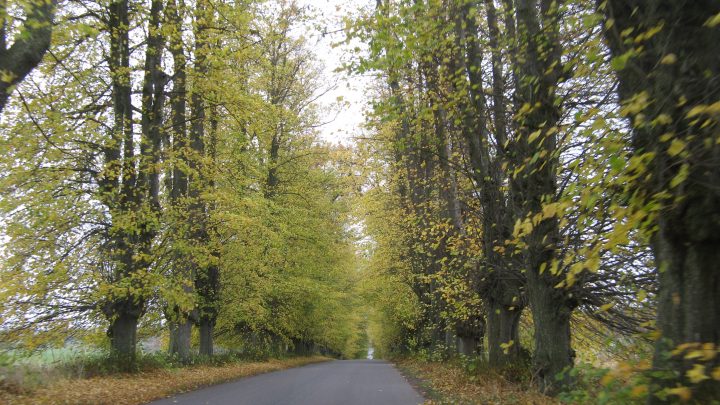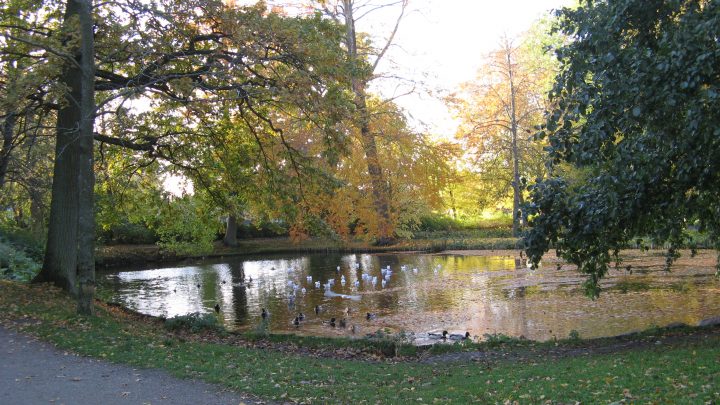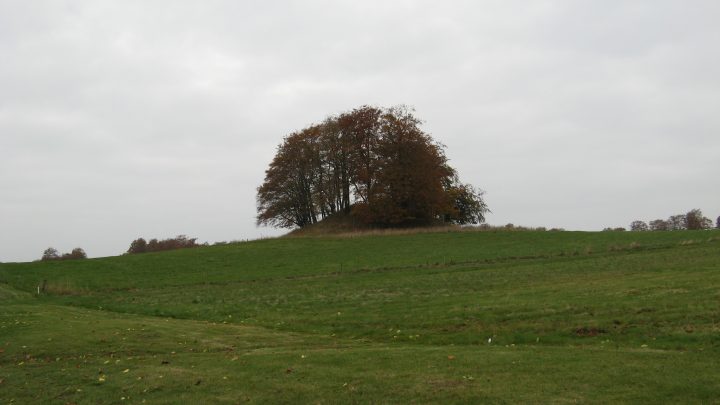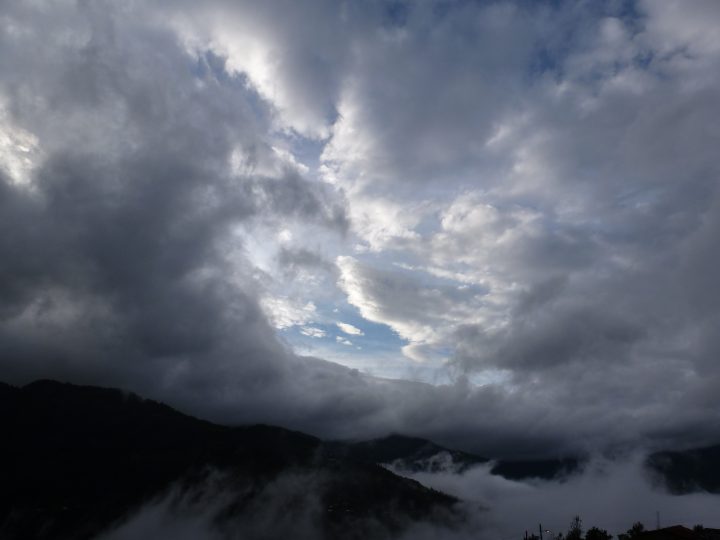I
Bob Carty’s Arctic report and how it froze my heart
Scientists do not write in the first person, since their findings seek to reflect processes that unfold beyond the vagaries of human will. When they say that the explanations they pursue are “objective,” one of the things they mean is that their models are as free as possible from the “subject,” with all of her or his subjective preferences, desires and biases. However, the climate crisis we now face has been breaking down these distinctions between object and subject, because we are now beginning to directly and personally experience climate change as never before.
Most of us are already aware of the difference between weather and climate. As NASA puts it:
Weather is what conditions of the atmosphere are over a short period of time, and climate is how the atmosphere “behaves” over relatively long periods of time.
Climate is measured in centuries and millennia, but the weather is what we experience over the period of a day, a season, a life.
Contemporary climatologists and meteorologists must create models to reach backwards to the beginning of the industrial revolution (and much further in the past), so they can extrapolate forward into the next century. That is no easy task. Are we heading to a world that is 1.5-Celsius degrees warmer? Maybe 2 degrees or 3 degrees? No one knows for sure, especially if we are unable to curtail our current destructive practices.
Speaking personally, I am a 77-year-old man who was born in rural England, raised in New York City, and who has spent the last fifty years in Montréal – with a year off in the Netherlands (more about that a little later).
I completely believe the scientific consensus that greenhouse gases and other pollutants will bring such heat to the atmosphere that, without radical change, our children and grandchildren will live in a dystopian world. The air around us will produce great negative change in the atmosphere, and the biosphere will suffer terribly.
Climate change now means the disappearance of land and of coast and of animals. It is clear as well that for present and future generations, weather and climate are coalescing, “revealing” themselves objectively and subjectively in the atmospheric disturbances right before our eyes.
This kind of synchronicity only happens at certain historical moments. The same type of convergence occurred at the beginning of the Industrial Revolution when climate was obviously altering, although today’s scientific forms of measurement were not available. People nonetheless perceived the change strongly in their own lives – in the polluted rivers, the coal-blotched towns, and the workers with poisoned lungs and cancerous skin.
The industrial revolution continues today, but many of its ugly externalities have been displaced to countries beyond Europe and North America. Still, even if sometimes unseen, the global transition we now face is not unlike the one 200 years ago, despite technological trappings that disguise the real state of things.
Empirically, I cannot readily speak of the climate, but I can look back at my own lifetime of experiencing the weather and recall a number of occasions when alterations in nature really became evident to me. In my mind’s eye, I can see a whole set of moments that represent my own first-person sense of climate change.
As with many others, my reading of Rachel Carson’s Silent Spring in 1962 prompted me to begin opening my eyes to the gravity of our interventions against nature. The book analyzed the impact of pesticides on insects and began with an epigraph citing remarks made by Albert Schweitzer in the 1950s to a beekeeper whose bees had been destroyed by pesticides: “Man has lost the capacity to foresee and to forestall,” said the Alsatian theologian. “He will end by destroying the earth.”
Looking back, there was one personal epiphany that stood out, representing the environmental destruction we have not been able to forestall.
In 2000, a very gifted CBC producer, the late Bob Carty, made a radio documentary about how warming temperatures and thinning ice in the western Canadian Arctic were affecting people south of the polar belt. In his lucid way, Carty described going on an icebreaker and observing a weather feedback loop.
Warmer arctic temperatures were melting ice whose white surfaces had reflected solar energy. There was then a greater amount of dark water that absorbed the heat of the sunlight in the western Arctic. This absorption in turn continued to melt more ice. Each moment in the loop – ice melting, dark water, more ice melting, more dark water – reinforced the next.
This process is known as the ice albedo effect. Carty recorded the sounds of the ship breaking ice with its prow and gave a very direct explanation of the self-reinforcing dynamic taking place on the surrounding ice flows. I remember sitting in my Montréal kitchen listening to the radio and feeling completely stunned by the gravity of what Carty’s mild voice was so vividly describing.
His report froze my heart.
True, all through my various wanderings I had been aware of changing weather. In the late 1970s there was a hot and weirdly “brown” autumn in England, when normally green fields looked more like arrays of tweed jackets. When my wife and I lived in the Netherlands in 1989-90, I worked at Radio Netherlands (RN), and we had brought our ice skates with us. That winter, though, the canals surrounding the area where we lived only froze over twice.
Meanwhile, back home in Montréal, winters were becoming shorter and shorter until there were only 8 weeks left when you could count on playing outdoor hockey.
But it was Bob Carty’s radio report that stood out for me as a metonymy symbolizing all my other misgivings over a number of years.
II.
From la canicule to 2020
In June 2003, my wife and I hiked in the Pyrenees. It turned out to be l’été de la canicule, the summer of the great heat wave, when temperatures in Europe were higher on average than they had been since 1540. We were at altitudes above 5,000 feet, and it was supposed to be about 20 degrees Celsius in the abandoned village where we spread our sleeping bags in the evening. Instead it was 30 degrees Celsius at 8:00 p.m.
The close and uncomfortable heat of the still air made the broken walls of the village houses seem all the more bleak. The next day we walked to a higher altitude, up to beautiful meadows, and completely by chance met a Spanish photographer who was an expert on alpine flowers. When he told us that all the glaciers he had visited in the French and Swiss Alps were drastically melting, I felt deeply depressed. What he spoke of was imposingly real.
It was around this time that I was using the naturalist Edward O. Wilson’s book, The Diversity of Life (1999), to teach a graduating class at Dawson College in Montréal. The emphasis in the text was on biodiversity, and near the end of his argument, Wilson stressed that “extinction rates are already hundreds or thousands of times higher than before the coming of man.” He sounded the alarm: “I have said that a fifth or more of the species of plants and animals could vanish or be doomed by the year 2020 unless better efforts are made to save them.”
Wilson wrote that the plants and animals of the world are caught in a vise: “On one side they are being swiftly reduced by deforestation and other forms of direct habitat destruction. On the other side they are threatened by the greenhouse effect.”
On a cold day in the autumn of 2004, as I stood waiting for a traffic light to change on the corner of de Maisonneuve and Atwater in downtown Montréal, I suddenly had a mental vision of all the ice fields in Greenland melting in my lifetime. The moment was hardly rational – but for the first time I had a deep personal feeling that such a profound change could happen very quickly.
I was thinking about this idea at the time, probably because of a random article I had been reading about ice melting at the bottom of ice sheets and the resulting water then reducing the coefficient of friction far below the ice surface, to the extent that whole glaciers would start to slide into the sea.
James Hansen is the famous American atmospheric physicist who had a run-in with his own government. In his 2009 book, Storms of my Grandchildren: The Truth About the Coming Climate Catastrophe and Our Last Chance To Save Humanity, Hansen told the story of trying to persuade powerful officials in the U.S. government that our climate is changing. In making his case, he focused on the Arctic and its ice.
Hansen explained how climate change consists of “forcings” – solar energy, greenhouse gases, and aerosols – and “climate feedbacks” such as ice, snow, clouds and water vapour.
His estimates of what we really need to do are now a decade old but they bear remembering. In 2002-2003, to his considerable discomfort, Hansen found that Scientific American insisted on distorting his commissioned article, “Can We Defuse the Global Warming Time Bomb?” His criticisms of the Intergovernmental Panel on Climate Change (IPCC) were not welcome, and the editors were intent on reflecting an IPCC perspective that in Hansen’s view minimized likely sea level rise, accepted far too high levels of global warming, and failed to envisage alternative scenarios.
He withdrew his article from Scientific American and published his own version, free of editorial interference:
My inference [in 2003] was that global warming (…) should be kept to less than 1 degree Celsius. That limit implied that CO2 would need to peak at about 450 parts per million – or perhaps 475 ppm, if substantial but plausible reductions of non-CO2 forcings were achieved. (As mentioned earlier I’ve since revised that target limit downward to 350 ppm.) [Hansen, p. 76]
Hansen was greatly concerned by rising temperatures and their effect upon ice. He has estimated that during inter-glacial periods in the past, warming of between 1 degree and 2 degrees Celsius produced major water level rises. He came to believe that we must limit CO2 to 350 parts per million.
III
Destroy The Power Of Ahab
Fast forward to right now.
January 2020 was the warmest month on record for the global climate. The National Oceanic and Atmospheric Administration (NOAA) of the United States government has recently issued a bulletin report:
The January global land and ocean surface temperature was the highest on record at 2.05 degrees F (1.14 degrees C) above the 20th-century average. This surpassed the record set in January 2016 by 0.04 of a degree F (0.02 of a degree C).
The four warmest Januaries documented in the climate record have occurred since 2016; the 10 warmest have all occurred since 2002.
On Feb. 11, 2020, the Mauna Loa Observatory on Hawaii reported its highest ever February measure of CO2: 416.08 ppm.
Greta Thunberg reacted to this news on her Twitter account:
The saddest thing is that this won’t be breaking news. And basically no one understands the full meaning of this. Because we’re in a crisis that’s never been treated as a crisis.
While writing this article, I have been in contact with climatologists from the Nordic countries. They have told me that Norway, Sweden, and Finland have all been experiencing surprisingly warm winters, with very little snow. One of these experts is Aarne Granlund of Finland. After a visit to the Arctic four years ago, Granlund wrote these comments on his blog:
Science measures that the cryosphere – frozen water in its multiple forms – is now melting and thawing at rates which are unimaginably fast and in quantities which are beyond understanding. The ice sheet on Greenland is losing mass; sea ice on the Arctic Ocean is shrinking both in volume and in extent. The previously present ice in the ground called permafrost is melting too. Permanent features of the landscape are unraveling. If you want to follow these changes, look at what your national meteorological service says. You’ll find the trends there. Talk to scientists on social media. See for yourself on Earth Nullschool, Climate Reanalyzer or some other online climate and weather visualization service. NASA has great communications on this issue. (“How To Witness Climate Change,” Nov. 4, 2016, Aarne Granlund)
Aarne Granlund takes climate change personally.
Greta Thunberg takes climate change very, very personally.
And this intensity is the principal source of social change right now.
On September 27, 2019, half a million people marched in Montréal with Greta Thunberg to demand action on climate change. I was there as part of a delegation from the non-partisan Green Coalition, a Montréal group that has been fighting for the environment for more than 30 years. The event was inspiring and fun, but also chastening, because it was clear that the half a million individuals would disperse to their own lives – and perhaps very little would change, despite all the good will.
Nonetheless, a critical mass of committed people is definitely emerging worldwide and the source of this particular upsurge was one Stockholm teenager sitting down, holding a sign in the street only a year or so ago. Thunberg and many others are “forcing” (to borrow a term from Hansen) a massive, global coalescence of energized individuals.
The challenge will be to create an enduring movement. And governments will have to face hard policy choices head on. For Canada’s extraction economy, that means changing the entire way we do business. Storms of My Grandchildren ends with James Hansen making two firm demands: 1) there must be a continually rising price on carbon emissions; and 2) “coal emissions must be phased out rapidly, and the horrendously polluting ‘unconventional’ fossil fuels, such as tar sands and oil shale, must be left in the ground.”
For Canada, the imperative is absolutely clear: no tar sands production whatsoever.
At this time, Albertans do not want to accept that they are clinging to a dying resource industry. In “clean” Québec, with its plentiful hydroelectric power sources, citizens are purchasing more and more SUVs, oblivious to their own blindness. Their government, meanwhile, pursues natural gas projects without any true regard for the environmental crisis.
At the same time, the captains of global capitalism want to save their ship – even if the rest of us perish in the process. We are like the mesmerized sailors of the Pequod in the grip of Captain Ahab’s monomania. Herman Melville wrote Moby-Dick as the tragic epic of the American empire, and we are living out that drama right now. Those pages are in our veins.
We know how the story reaches its climax. The whale will hit the vessel. When that happens to us, first person climate change will shift from singular to plural, “I” will become “we,” and a huge social struggle will likely emerge whose outlines we are just beginning to see.
At this point, though, the research and the news stories keep coming in.
On Feb. 12, Benjamin Storrow of Scientific American filed a report: “Global CO2 Emissions Were Flat in 2019 – But Don’t Cheer Yet.” Storrow points out that while coal emissions are down in Western Europe and North America they are actually going up in China and India. Companies maintain their supply chains, but shift the dirty work of fossil fuel production elsewhere. Methane-producing natural gas projects are also going up around the world at a frenetic pace. Storrow ends his article with an observation from Glen Peters, research director for International Climate and Environmental Research in Oslo, Norway. “There is little in sight,” says Peters, “to tell us we are about to reduce emissions at the rates necessary for 1.5 degrees Celsius or 2 C.”
Peters’ judgement, in fact, is that “the world is headed toward a global temperature rise of 3 C.”
Such an outcome would produce a very serious rise in sea levels.
As I am filing this story (on Feb. 15, 2020 in Montréal), I am looking at yesterday’s front page of the daily newspaper Le Devoir. The headline reads (my translation): “Record Heat in Antarctica; More than 20 degrees Celsius on the World’s Coldest Continent” (“Record de chaleur en Antarctique,” par Fabien Deglise, Le Devoir, le 14 février, 2020.)
On Sunday February 9, 2020, Brazilian scientists registered a temperature of 20.75 degrees C on the Antarctic Peninsula – the warmest ever. True, it is summer in the southern hemisphere, and the peninsula has the most moderate weather on the continent, but the usual temperature is zero or just below at this time. And the continent’s average annual temperature is -57 degrees C. The report in Le Devoir pointed out that the annual loss of glacial ice sheet in Antarctica had increased sevenfold from 1979 to 2017, and if all the ice melted on that continent, world sea levels would rise by 60 meters!
We have reached the point of interdependency described by the poet John Donne:
If a clod be washed away by the sea,
Europe is the less.
As well as if a promontory were…
Each man’s death diminishes me,
For I am involved in mankind.
Therefore, send not to know
For whom the bell tolls,
It tolls for thee.
The belling is tolling for us all, and we are at a moment of involvement, both passive and active, when first person climate change must become a plural WE.
We are different, though, from the sailors on the Pequod. We know that Melville named his prophetic ship to remember the elimination of the Pequot Native American tribe. When you sail on the Pequod, genocide is never far off, and we unconsciously sense that proximity. Ishmael’s knowledge, his science, is available to us because the Ishmaels all around us are telling us a tale of destruction every day.
Ahab’s mad narcissism is truly the driving force of the world as it is organized today. We should be able to see that reality.
Melville’s epic tale forewarns us. We must arise and destroy the power of Ahab – before he kills us all.



